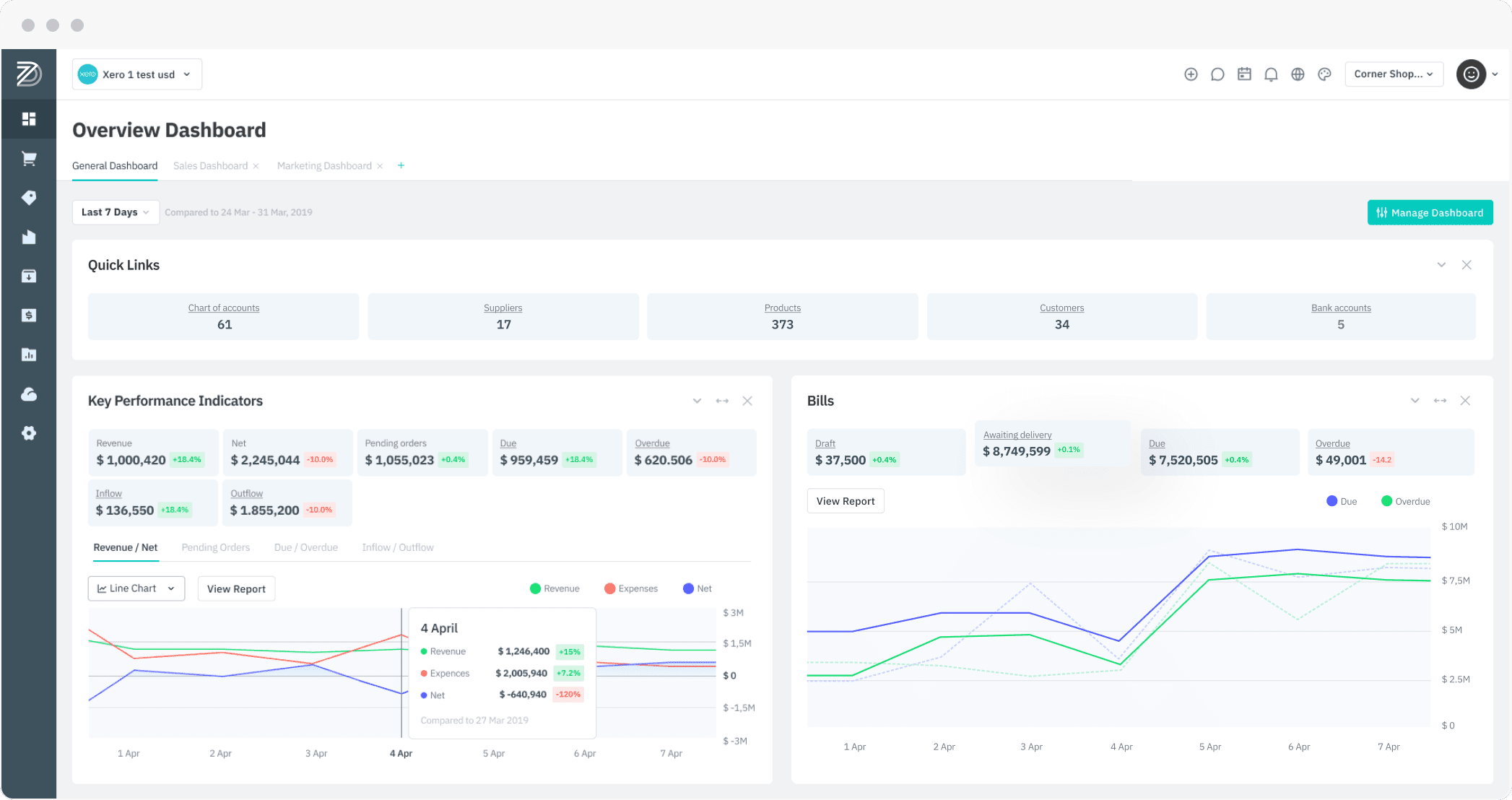
Amazon Seller Central vs Vendor Central: Which way should you go?
While the ecommerce landscape ebbs and flows there remains one constant we can’t escape (for now):
Amazon is the single most important platform you can be selling through if you want to stay competitive and profitable.
A 2016 study conducted by Bloomreach Inc., an internet marketing firm, revealed that 55% of consumers use Amazon to search for products as their initial step on the buyer’s journey.
Those figures are up from 44% the previous year and the trend doesn’t seem to be slowing down.
Most wholesalers and retailers begin with Amazon’s Seller Central since it’s the most accessible platform when starting out, but at some point, you’re probably going to consider becoming an Amazon Vendor.
We want to help you make the best decision between the two, so we’ll share with you exactly what these platforms offer, the benefits and drawbacks of each, and how they can help or hinder your ecommerce business.
But first, let’s start by defining their differences.
What’s the Difference Between Amazon Seller Central vs Vendor Central?
The 2 primary ways to make money on Amazon: as a 3rd party seller (Seller Central) or a 1st party seller (Vendor Central).
Let’s take a look at exactly how these interfaces work and what they offer to you.
Seller Central
Seller Central is the interface that allows wholesalers and retailers to list their products for direct purchase from consumers. Amazon considers you a “marketplace” or “3rd party” seller and gives you nearly full control over your brand messaging and marketing.
If you’re selling 40 items or less, you can sign up for an Individual plan without a subscription fee, and you’ll simply be charged $0.99 per item sold plus other selling fees, which vary by category.
If you’re a fairly high volume seller, then you can sign up for the Professional plan which costs $39.99 monthly plus per-item selling fees, which vary by category.
Vendor Central
Vendor Central is the interface used by manufacturers and distributors to sell directly to Amazon. Instead of setting up a consumer facing list of your products, Amazon buys your stock in bulk and sells it for you.
You negotiate a price for your products with Amazon, then Amazon will send you purchase orders which you can fulfill by shipping your stock to Amazon directly. They handle the marketing and you pay a set co-op fee.
Vendor Central is currently invite-only, and Amazon usually reserves their invites for popular brands or big companies who have strong sales and a strong reputation in the market.
However, you can sign up for Vendor Express to begin selling wholesale to Amazon right away and you’ll get most of the same benefits. If you’re selling enough on either Vendor Express or Seller Central, Amazon may ask you to participate in Vendor Central.
Even though Vendor Central and Vendor Express are similar, there are some key differences that we’ll touch on a little later in this article.
For now, let’s look at the benefits of being a Seller vs. being a Vendor if you’re offered that choice.
What Are the Benefits of Seller Central vs Vendor Central?
When choosing which interface to use, or when trying to switch from one interface to the other, it’s critical to know exactly what you’re getting out of the deal.
Let’s take a look at some of the main benefits of Seller Central and Vendor Central, then afterward, we’ll take a look at the drawbacks of both.
Benefits of Seller Central
Price Control
You set your own prices and have full control on when and why you raise or lower them – allowing you to maximize your profits.
Customer Analytics
Seller Central provides a clean and robust analytics dashboard to help you forecast demand and understand your customer’s interactions with your products on Amazon.
Creative Marketing Control
Since you’ll have full control over your listing, you’ll have full creative control over marketing aspects such as what keywords are used, what videos are added, what pictures are displayed, and what strategies are implemented through Amazon’s premium advertising features.
Quick Payouts
Seller Central offers payments every 2 weeks which can be critical to your business if you suffer from lack of cash flow or your profit margins are very slim starting out.
Fulfillment by Amazon (FBA)
If you sell high volume and become a “pro merchant,” Amazon will give you access to their Fulfillment by Amazon (FBA) program whereby they handle your shipping, customer service, and returns.
Benefits of Vendor Central
Amazon Vine Program
Amazon’s Vine program is mainly used for pre-released or new products and allows the top reviewers on Amazon to (hopefully) write great things about your products and give your listings a huge boost in credibility.
More Sales Right Away
Since Amazon buys your products in bulk, you’ll see a larger volume of sales faster than when you sell them one at a time as an Amazon Seller.
A+ Content
A+ Content is essentially an enhanced product listing that expands the basic description field and product images, displays a detailed video explaining your product’s features, provides a comparison chart and generally enhances the look and feel of your product for increased conversions.
Additional Marketing Tools
A+ Content isn’t the only marketing perk offered by Vendor Central, you also get access to Amazon Marketing Services, Amazon Display Advertising, and Amazon’s Subscribe & Save program that consumers use to receive your items on a monthly basis.
“Sold by Amazon” Seal of Approval
Established brands that sell on Amazon as a 3rd party retailer already have high credibility in the eyes of their consumers. But, if you’re relatively unknown, having Amazon put their stamp of approval on your products by displaying them as being “Sold by Amazon” will boost consumer confidence and make it more likely they will buy your product.
What Are the Drawbacks of Seller Central vs Vendor Central?
As many benefits as Seller Central and Vendor Central offer, they each have their own set of drawbacks that you should be aware of.
By contrasting the positives with some of these negatives, you’ll have a more balanced view on which interface best fits your business needs.
Seller Central Drawbacks
High Overhead
With complete control over your product listings comes complete responsibility for your stock maintenance, customer support, shipping, etc. While you can enroll in the FBA program if you’re not selling enough, you may be paying way more in overhead than the service is worth to handle everything until sales pick up.
Basic Product Pages
Unfortunately, if you’re not a Vendor you can only create basic product pages with basic descriptions and you miss out on longer, narrative descriptions, detailed product videos, and comparison charts.
Fierce Competition
Amazon sells well over 300 million products on their platform which creates a fiercely competitive environment for a new seller as much as an established one. You might even start competing with Amazon directly – if they observe a high-performing retailer, they’ll go directly to their manufacturer or distributor and buy wholesale and sell it themselves through Vendor Central if they can.
Vendor Central Drawbacks
Long Wait Times for Payments
Vendor Central pays its sellers after at least 60 days, but they could hold payment all the way up to 90 days, which can obviously hurt if you’re suffering from low cash flow.
Violations of MAP Pricing
Amazon has made it very clear that they don’t adhere to Minimum Advertised Prices and allow retailers, including themselves, to sell products below the manufacturer’s MAP requirements, which can cut into your profit margins if they decide to sell lower than yours.
Poor Seller Support
While 3rd party sellers have access to quick and easy support—since they’re required to manage their own listings—a 1st party seller has very little oversight or input into their product listings. Everything needs to be approved by your account manager, and if you’re not paying for Vendor Central’s extra services, you probably won’t receive preferential support treatment.
What’s The Difference Between Vendor Central vs Vendor Express?
Amazon’s Vendor Express program allows anyone to become a Vendor without being asked to join Vendor Central. It’s very similar to Vendor Central with a few key differences.
Since you may or may not be invited to Vendor Central, but still want to benefit from selling wholesale to Amazon, here are a few key benefits and drawbacks you should know about Vendor Express.
Benefits of Vendor Express
- Pay nothing for your products to be warehoused by Amazon.
- No wait to get started since it’s open to all sellers.
- High turnover rates – so if you have a hot-selling product it could sell even faster through Vendor Express.
Drawbacks to Vendor Express
- Net 90 payment terms.
- You can only sell 85 items, while Vendor Central offers unlimited product listings.
- Amazon is in complete control of how much they sell your products for.
So… How Do You Choose Between Seller Central vs Vendor Central?
If you’re a smaller brand that needs absolute control over your pricing and shipping to maximize growth, then Seller Central is right for you.
If you’re a bigger/quickly growing brand that wants to move a lot of product while letting Amazon manage just about everything for you – go with Vendor Central.
Regardless of which interface you choose, though, you’re going to need an effective system for managing your stock and inventory levels in order to be successful….






